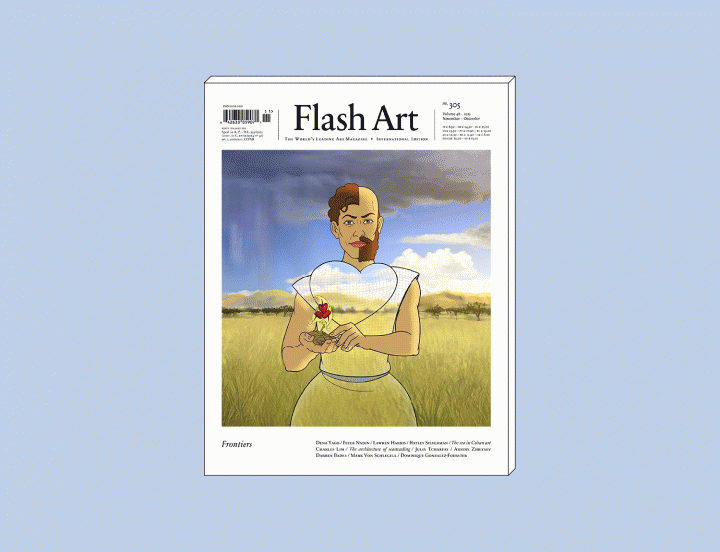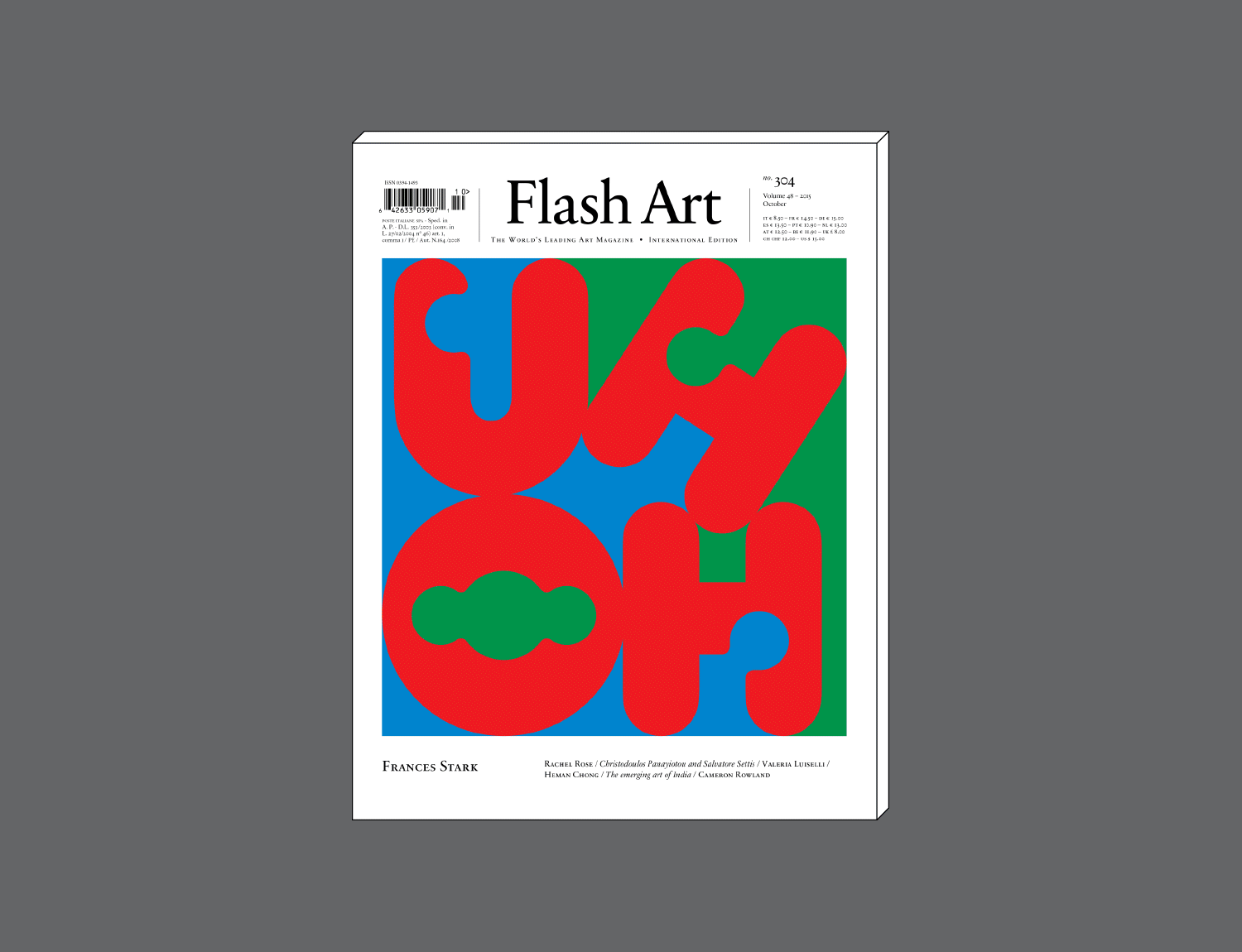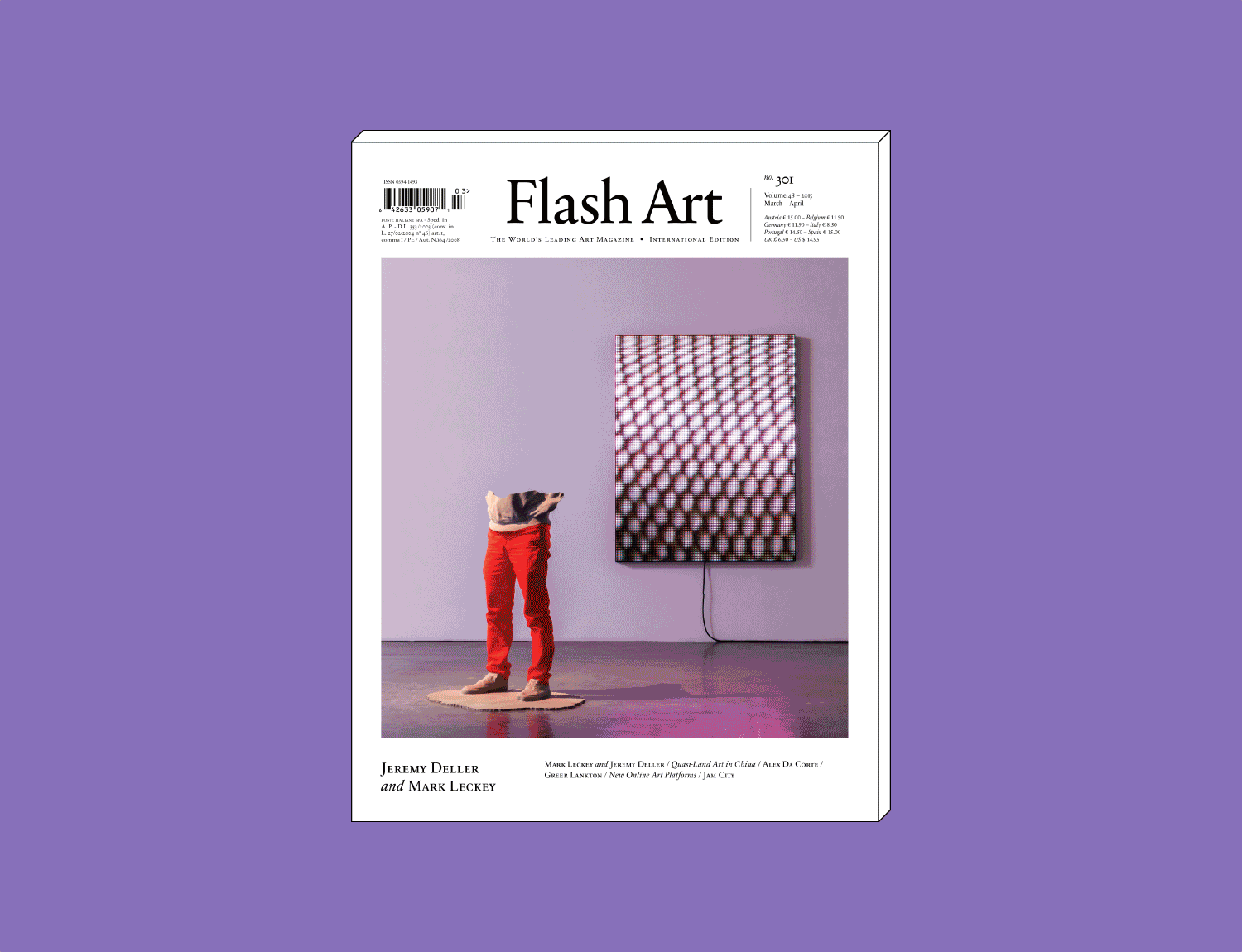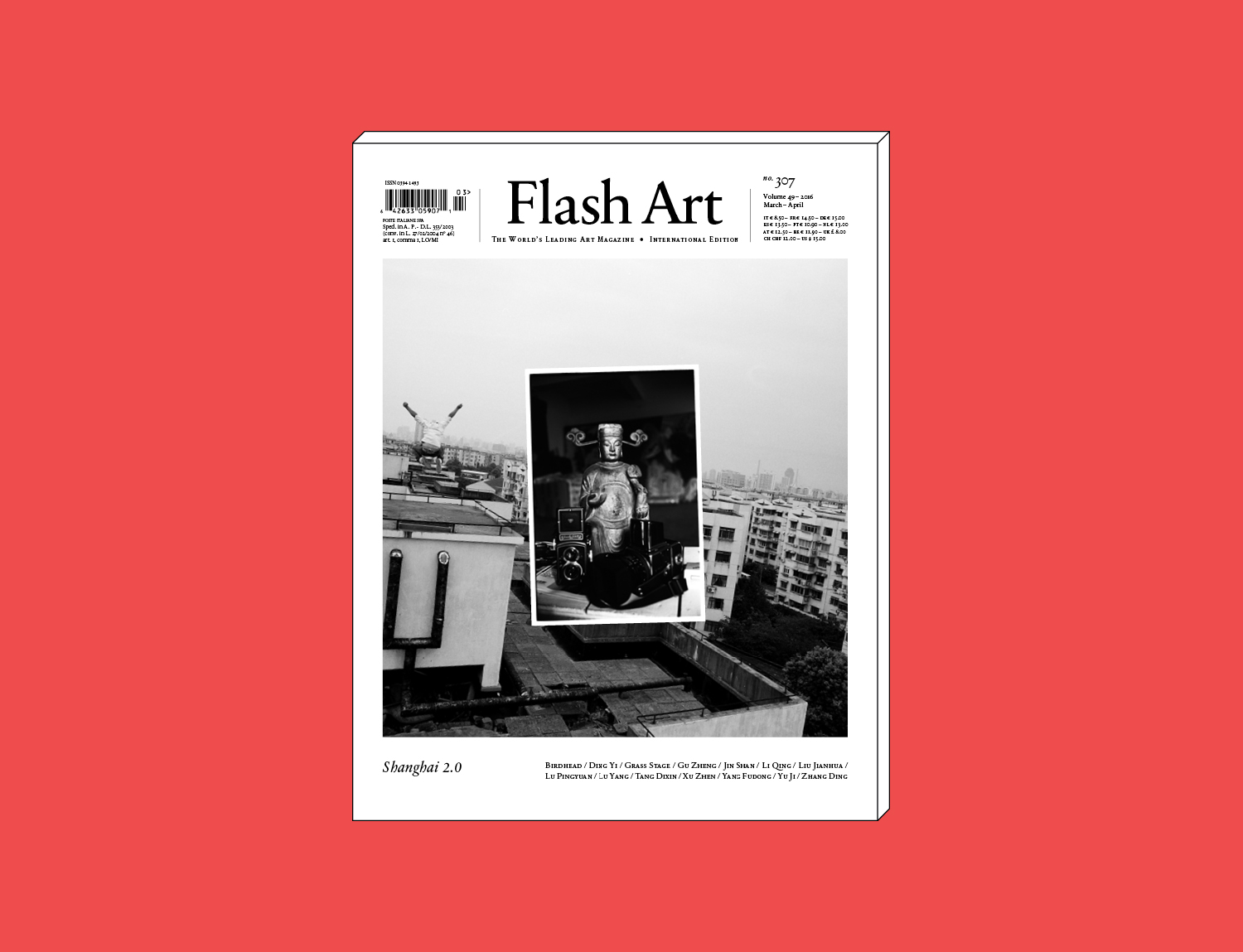We are pleased to announce that the November – December issue of Flash Art International is out now.
This issue of Flash Art considers the revitalization of pastoral narratives in contemporary art and recent artist contributions to radical theories regarding the so-called “end of nature.” As architect and theorist Martti Kalliala suggests in his contribution to this issue, “If 2011, with its uprisings, protests and riots was the year of #voice, 2015 might be remembered as the year of #exit.” Confronted with political secessionist movements, mass exoduses from the global south, the continued proliferation of extra-state zones and sci-fi-inspired dreams about outer space as a potential destination for humanity, artists and cultural producers seem to be responsible for channeling these collective escape attempts into an ultimateexit. However, given that the earth is the only habitable space from which we might escape, the fundamental question remains: Where to?
This issue explores spatial and geographic destinations upon which terms like “frontier” and “terrae incognita” are posited in creative production. Considered as both fictional and real, these departures from anthropic and urbanized environments mostly confirm to three corresponding macroscopic scenarios: inlands, oceans and outer space. While pastoralism has traditionally considered nature as the sole alternative for escaping urban strife, we aim to question how the pastoral genre might account for nature’s lack of promise and to revisit its conception of escape when such a scenario is no longer a desire but a necessity.
In this issue:
Laura McLean-Ferris talks with Dena Yago about pioneers, sustainability models and artistic communities.
“Pastoralism becomes something else when the only remaining frontier is ourselves, which we then in turn cannibalize — all while still using the totems and iconography of the period of expansionism, when the rural and the frontier were vast expanses of land to homestead.”
— Dena Yago
Michele D’Aurizio discusses Peter Nadin’s art and farming.
“For Nadin, the farm’s produce and the art are both the result of the same process. But this process consists of giving form to experience, that is to say life, in bridging the distance between the gesture and its output, between creation and discursive production.”
— Michele D’Aurizio
Steve Kado surveys the landscape paintings of Lawren Harris.
“His exposure to the northern landscape transformed him from a painter of urban scenes into a spiritual seeker high on Theosophical fumes. Of course there really are mountains and icebergs in the far north of Canada, but Harris was clearly working on the icebergs and mountains in his mind.”
— Steve Kado
Rachel Price considers the sea in Cuban art.
“The sea has long been a defining feature, indeed an inevitability, in Cuban art, literature and life. Now it turns ominous. The placating distance of the Kantian sublime has telescoped. The ocean, that most given of givens on an island, has become an unknown entity at the heart of climate change.”
— Rachel Price
Martti Kalliala introduces the architecture of seasteading.
“Seasteading is an entertaining experiment in architectural thought: it ascribes a legible, if dynamic, order onto a formless, liquid substrate; it projects an idea of social organization embodied in a spatial form; and it engenders platforms both literally and figuratively.”
— Martti Kalliala
Ben Vickers talks with Julia Tcharfas and Arseny Zhilyaev about the birth of the space age and Russian cosmism.
“Russian cosmism suggests that if you want to live in outer space, we should make efforts to transform the environment to make it more friendly to us, but at the same time we should transform ourselves into something else, maybe into machines or new humans more suitable for interstellar flights.”
— Arseny Zhilyaev
Eli Diner digs into Mark von Schlegell’s System Series.
“In place of an extensive treatment of the political, von Schlegell offers a vision of history in which the utopian possibilities born of earth’s destruction in turn fizzle out in familiar patterns of coercion and civilizational decline. Crisis is always already at hand.”
— Eli Diner
Also in the issue, three portfolios by Hayley Silverman, Charles Lim and Darren Bader.
Plus, for Time Machine:
Hans Ulrich Obrist talks with Dominique Gonzalez-Foerster about plans to escape. (From Flash Art International, no. 251, November-December 2006)
In Arena:
Noah Horowitz on Art|Basel|Miami Beach; Slow and Steady Wins the Race; Francisco Cordero-Oceguera on Lodos, Mexico City; Yongwoo Lee on Shanghai Projects; Oneohtrix Point Never; Francesco Vezzoli on “Museo/Museion,” Bolzano.
In Reviews:
“Pavillon de l’Esprit Nouveau” at the Swiss Institute, New York; Martine Syms at Bridget Donahue, New York; “United States of Latin America” at MOCAD, Detroit;Ed Fornieles at Château Shatto, Los Angeles; Gary Indiana at 356 Mission, Los Angeles; Daniel Steegmann Mangrané & Philippe Van Snick at MAM, Rio de Janeiro, and Casa Modernista, São Paulo; Elmgreen & Dragset at Victoria Miro and Massimo De Carlo, London; Stuart Middleton at Carlos/Ishikawa, London;Nancy Lupo at 1857, Oslo; Paul McCarthy at the Schinkel Pavillon, Berlin; “Take Me (I’m Yours)” at the Monnaie de Paris; “I Love John Giorno” at the Palais De Tokyo, Paris; Steven Claydon at the Centre d’Art Contemporain, Geneve; SusanPhilipsz at Villa Croce, Genoa; Louise Bourgeois at the Garage Museum, Moscow; “The Crystal Palace & The Temple of Doom” at the Petach Tikva Museum; Sheela Gowda at Gallery Ske, Bangaluru; “Copyleft: Appropriation Art in China” the Power Station of Art, Shanghai.





